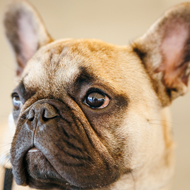RVC addresses ethics of selective breeding

Specific reference was made to brachycephalic dogs and cats, which are prone to obstructive breathing and struggle with exercise.
A panel comprised of experts from the RVC and in collaboration with the Centre for Agriculture and Biosciences International (CABI) held a symposium entitled ‘Animals Pushed to the Limits- implications for welfare, ethics and the veterinary profession’.
Following a series of presentations focussing on working equines, dairy cattle, dogs and ‘veterinary enhancement ethics’, a panel of speakers explored how the veterinary industry could facilitate compromise and improvement for selectively bred animals.
Specific reference was made to brachycephalic dogs and cats, which are prone to obstructive breathing and struggle with exercise as a result of their genetic ‘enhancements’.
In the fifth RVC-CABI Symposium, 160 delegates from governments, NGOs, academics and the public heard speakers including the chairman of the Farm Animal Welfare Committee, representatives from Bristol and Nottingham universities, the University of Porto and the RVC.
Delegates from international equine welfare charity, Brooke, also joined the discussion, which addressed current and important animal welfare problems. Kimberly Wells, senior animal welfare advisor at Brooke, said: “The evidence presented by each speaker demonstrated that animals are pushed to their limits to fulfil human needs for survival, variety, entertainment, novel techniques, food and production.”
BVA president Sean Wesley, who attended, said: “Veterinary leadership in animal welfare, interdisciplinary collaboration and increased focus on veterinary and animal welfare ethics are all areas being developed.”
The talks were recorded and will be available on the RVC website. They are part of an ongoing campaign to bring together experts to generate leadership in animal welfare and ethics.



 The BSAVA has opened submissions for the BSAVA Clinical Research Abstracts 2026.
The BSAVA has opened submissions for the BSAVA Clinical Research Abstracts 2026.